Sources of 1926 adverts for the Spartan, to include MyBulova, reflected a dial without sub-seconds and all but two 1927 and other sourced 1928/1929 adverts indicate sub-seconds (see supporting ads). All ads sourced consistently describe the Spartan as “14Kt. white or green gold filled case,” 15 jewel movement, radium dial and having a leather strap. There were a few references to “dust proof case.”
The number "9683" is stamped on the movement; however, I was unsure if this four digit number was a serial number.
The original stamp of the case serial number did not completely strike the first digit; however, after close study, I am confident the first digit is a 6. Additional close-up photographs are available if requested.
This caseback is stamped “14K GOLD FILLED” as opposed to “14K ROLLED GOLD PLATE.”
Signed Bulova: dial, movement, caseback inside.
Unsigned crown measured 6.10mm (digital caliper).
This example seems to wind properly and keep time; however, observation was limited given a complete servicing is pending. The existing hour hand and the remaining portion of the minute hand moves properly in a clockwise and counterclockwise direction and the sub-second hand appears to move properly. The crystal, “dust-proof” cover for the movement and all but the base of the minute hand are absent.
While the bracelet is aftermarket, as a side note, it is marked “STURDY, NICKEL SILVER, PAT 17739688, 1568617.” US Patent 17739688 was filed November 5, 1928 and issued December 17, 1929, Nels T. Nelson, as an individual. Nelson was associated with J.F. Sturdy’s Sons Company of Attleboro Falls, Massachusetts, and had several bracelet related patents observed between at least 1926 and 1933.
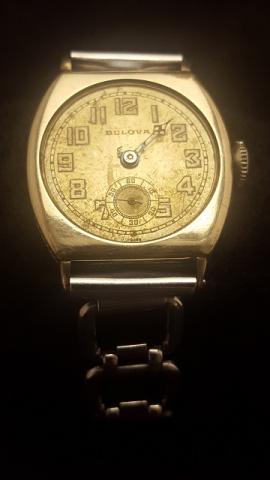
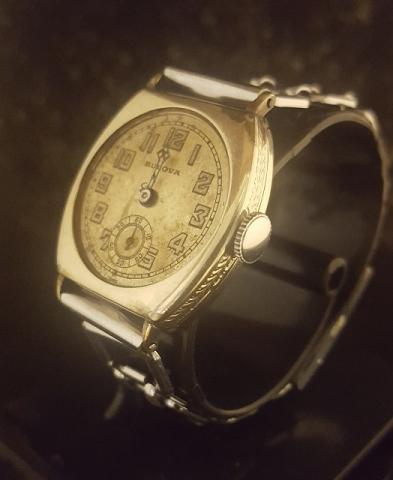
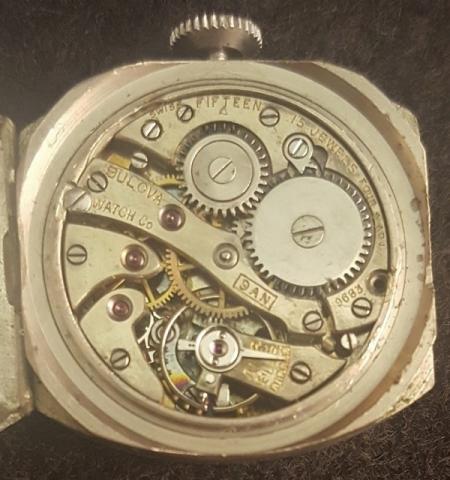
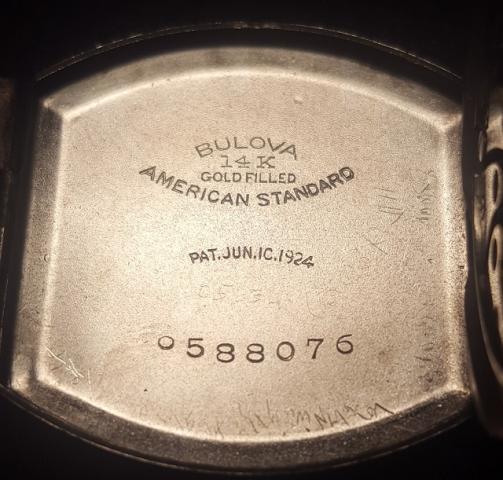
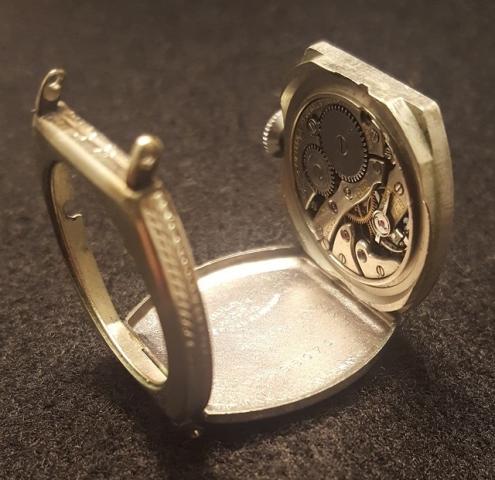
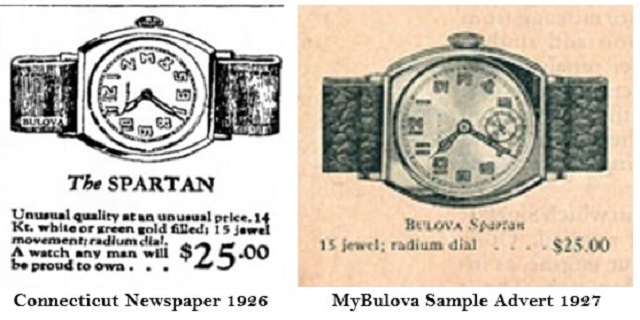
The Spartan came in 14K white gold or green gold filled and the case of this example has a distinct "antiqued" tone or hue. Any thoughts as to the nature of this? Could this be a green gold variant or is this just tarnishing due to age? I don't want to "buff" the case for fear of damage. I've included a comparison with my 1929 Unknown having a 14K white gold filled case. Also, are green gold cases rare?
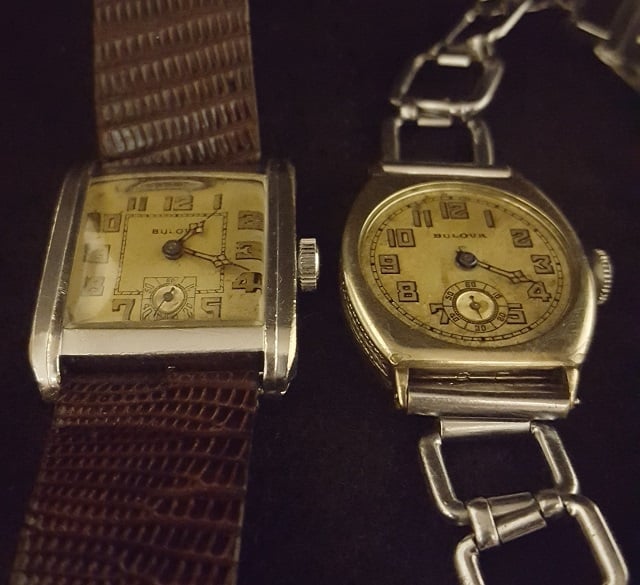
In reply to The Spartan came in 14K white by ncmountie
Green gold, Rose Gold and WHITE gold are all created by alloying yellow gold with various metals. Green gold seems to have been widely advertised in the twenties but not much after that. It's really difficult to tell the difference in photos for a variety of reasons. It seems likely that the color differences you note do indicate 'green' gold. Because Bulova was, and still is a mass producer of watches, I hesitate describe any Bulova watch as rare although I recognize that some are not seen in public forums as often as others.
In reply to Green gold, Rose Gold and by Geoff Baker
It is important to note that unless we are talking about 24K gold, even solid gold 9, 10, 14, and 18K is an alloy, and will tarnish to some degree. White gold has more silver in it and it will tarnish slightly. White gold is also usually plated with Rhodium, so the colour you see on a new white gold piece is not the gold. There is considerable off-gassing occurring within your average jewelery box, from the felt or fabric lining to the wood to the glue holding it together. Tarnishing is therfore common.
In reply to It is important to note that by Reverend Rob
